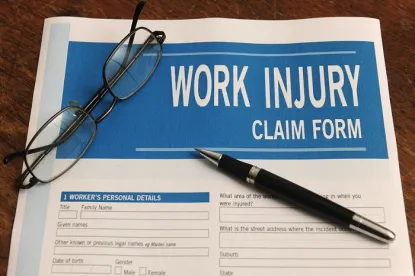Since the beginning of Ohio’s workers’ compensation system in 1912, employers have evolved in their approaches to implementing and managing their workers’ compensation programs.
Workers’ compensation coverage in Ohio is provided exclusively through the Ohio Bureau of Workers’ Compensation, which is the biggest single-line and largest state-operated workers’ compensation insurance provider in the United States with close to $29 billion under management.
Occupational injuries and diseases can be some of the most difficult to manage, because they affect other areas of your business: operations, human resources (HR), medical, finance and safety. As an employer, you have a responsibility to provide a safe work environment, which will prevent injuries, but how you manage it can positively impact overall costs.
To be sure, as a business owner, you have a legal and ethical obligation to do the right thing by your employees, who are your biggest asset. The following recommendations will make managing your workers’ compensation program easier.
1) Safety First
By recognizing your responsibility to maintain a safe workplace, you are respecting your employees, vendors and customers. If you do not have your own safety manager, safety consultants will help you with an audit of your workplace. The Bureau of Workers’ Compensation also has significant safety programs and resources to help in this area. Creating and maintaining a culture of safety should be your highest priority.
2) Compliance
Making sure your business is in compliance with the Ohio Bureau of Workers’ Compensation’s (BWC) rules and regulations is paramount. Timely filing of reports, forms, updates and other data is necessary for successful program and claims management. Use a Third Party Administrator (TPA) to coordinate with the BWC. Since the Ohio BWC is the sole provider of workers’ compensation coverage in Ohio, having a good relationship with the bureau is another valuable tool in your workers’ compensation program toolbox. Regardless of whether your TPA is national or local, its experience in the area of Ohio workers’ compensation compliance and regulatory matters will make your job easier.
3) Benchmarking
If you can’t measure it, you can’t manage it – so the saying goes. Benchmarking is the best way of determining whether you are really making progress in managing and reducing worker’ compensation costs. The concept of benchmarking is judging one’s performance as compared to others. It will give you insight into how to strengthen various aspects of your workers’ compensation program if they fall short. With benchmarking, you can use your company data to achieve improvement in your operation.
4) Coordination with Human Resources
Work with your HR professionals to determine how federal and state discrimination and employment laws and your workers’ compensation program fit together. This will help guide you to resolve claim-related issues. You can use these laws to your advantage in this complicated area through coordination of workers’ compensation mandates with the ADA, FMLA, the ADA interactive process or even job termination. This could have a direct impact on your bottom line costs and prevent future liability.
Your HR staff can help with transitional duty or off-site light duty options to get employees back to work. Use your HR staff wisely to navigate these complicated issues as they can also affect employee morale.
5) Avoiding Litigation
Early intervention in troublesome claims through agreements, mediation, settlements or other resolution can prevent litigation and long-term financial exposure. Alternative dispute resolution (ADR) can resolve your workers’ compensation claims and reduce your company’s costs. Litigated claims will take time, money, and cause disruption, distraction, and increased stress. Under Ohio Workers’ Compensation laws, an appeal can be filed in the county trial court in some circumstances, so preparing for that possibility can help you manage these disputes and understand your liability. Rely on your legal experts to guide you through this process efficiently and cost-effectively.
By focusing on the importance of safety, compliance, benchmarking, HR and ADR, along with the Ohio BWC’s resources, an effective hands-on approach to your workers’ compensation program -- whether you have two employees or 2,000 -- will serve to reduce costs, ease management and allow you to focus on your business.



 />i
/>i

